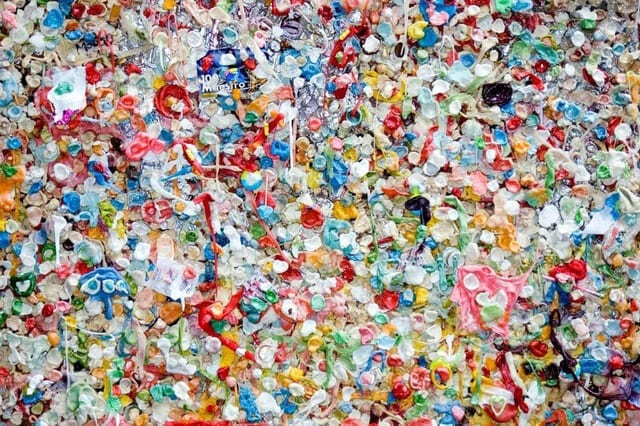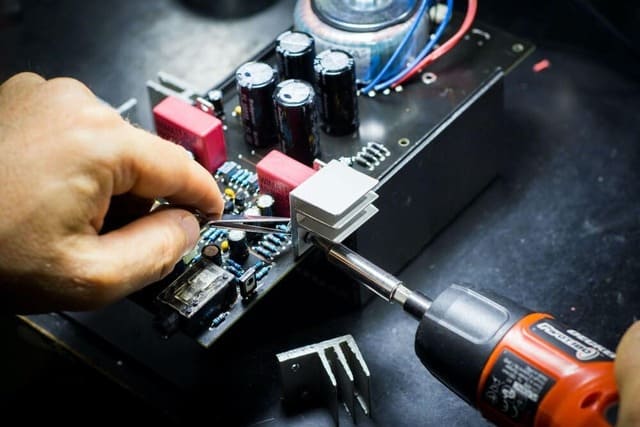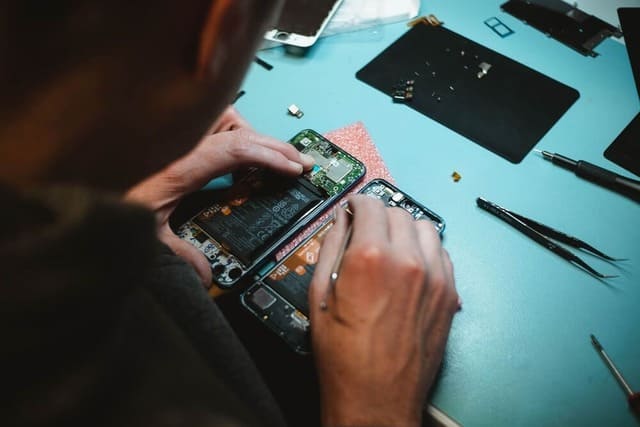Recycling: Is it Really the Best Environmental Solution?
Team WeeeDoIT
- October 29, 2021
Today, recycling is a part of our lives. Yellow bins, green bins, sorting our waste has become a habit and a genuine ecological act to fight climate change. Or at least, that’s what we imagine.
Recycling has become a genuine marketing argument and fuels the myth of infinite recycling. Between being a catch-all term and a guilt-relieving term, recycling raises questions about its effectiveness in the fight against climate change.
Each year in France, 573 kilograms of waste are thrown away per inhabitant. It’s a significant figure, especially considering that it has doubled over the past 40 years for two main reasons:
- The increase in population.
- The overconsumption of single-use products.
Packaging labeled as “recyclable” doesn’t necessarily mean it will be recycled. For example, only 9% of all plastic produced is recycled. The rest ends up in landfills, the environment, or is incinerated.
So, is recycling as beneficial as it claims to be? How does it work for electronic waste? What are the alternatives to recycling to reduce waste and environmental impact? WeeeDoIT offers its insights.
What Does Recycling Mean in Concrete Terms?
Recycling primarily means destroying waste or an object to make something else out of it. The resulting materials can be called “secondary raw materials.“
In comparison to producing new materials, recycling saves energy and resources needed for creation. Most importantly, it reduces the amount of waste to be processed. At least, that’s the classical idea of recycling.
However, several downsides need to be highlighted in this process. Especially the idea that recycling is endless and that it is the ideal solution to combat climate change. It’s important to remember that even though recycling is possible, it’s not always the case for several reasons: lack of infrastructure, lower cost to bury than to recycle, etc.
What Waste is Recyclable?
Although municipalities may have slight differences in what to sort, here are the 8 main categories of recyclable items:
- Plastic: found everywhere in our daily lives, including transparent bottles, opaque bottles, caps, and containers.
- Glass: mainly bottles, jars, and containers.
- Paper: along with cardboard, these recyclable waste represent 20% of all recyclable materials. This includes magazines, leaflets, boxes, and various packaging. The problem? Some cardboard packaging contains thin layers of metal or plastic.
- Metal: this includes objects made of steel or aluminum, such as cans, trays, tin cans, and milk cartons.
- Organic waste: perhaps the easiest to recycle, or rather, to compost. Also called “green waste,” they degrade naturally.
- Hazardous materials: any explosive, flammable, irritant, toxic, carcinogenic, or corrosive object is considered hazardous. Besides being dangerous to humans, they are highly polluting. It’s important to dispose of such waste in designated areas.
- Bulky items: too large to go directly into the trash, furniture, metal scraps, rubble must be taken to the recycling center.
How Does Recycling Work?
Once waste is placed in the yellow bin, what happens next? What techniques are used to recycle waste into new materials?
There are three recycling techniques:
- Chemical process.
- Mechanical process.
- Organic process.
Chemical Recycling
Chemical recycling involves various chemical methods to separate the various components of materials. For plastic, these methods include:
- Depolymerization.
- Pyrolysis.
- Dissolution.
Chemical recycling is highlighted as the ultimate solution to eliminate all plastic used each year by transforming them into new plastic compounds, products, or even fuel.
However, this plastic chemical recycling technique poses two problems:
- The process is very energy-intensive in terms of energy resources and water.
- The problem is simply shifted, not all plastic is recycled and/or recyclable, so the heaps continue to accumulate.
Mechanical Recycling
The second recycling technique involves separating the different materials that make up the waste using a machine. This may seem simple, but many things cannot be recycled because the materials they are made of are too thin, too interlocked, or because the different channels to extract them do not yet exist.
Mechanical recycling can also involve crushing waste to form “bricks” of secondary raw materials, ready to be used for something else.
Organic Recycling
Organic recycling is probably the simplest and most ecological technique of the three. Biodegradable waste, or “green waste,” is simply composted or fermented to be reused as fertilizer, humus, mulch, etc.
What About Electronic Waste?
Electronic and electrical waste, also known as WEEE or e-waste, are difficult to recycle because they contain numerous rare materials and small compounds.
WEEE consists of:
- Waste from electrical and electronic equipment from households.
- Commercial origin EE waste.
- Industrial origin EE waste.
- Institutional origin EE waste.
You can’t simply take them to the recycling center or throw them in the yellow bin. There are regulations governing the recycling of these WEEE.
On average, a French person produces 21.3 kilograms of electronic waste per year. Globally, 44.7 million tons of WEEE are produced each year, and only 20% are handled by a recycling system. Understanding the importance of regulating this sector, especially given the increasing use of information tools, is crucial.
The tonnage of recovered waste is aimed to increase, to recycle these WEEE better. The goal is to recover as much as possible. But this raises the question: what about the reuse of all these electronic devices? Many of them are still usable, or some components can be valorized.
Is Recycling Really the Best Solution?
Recycling poses several problems, increasingly pointed out:
- The myth of infinite recycling.
- The guilt-relieving aspect of using single-use packaging or materials.
- The financial, energy, and resource costs of the process.
- The lack of a 100% efficient system.
National Geographic explicitly points out the problem regarding plastic: “only 9% of this waste has been recycled. The vast majority, 79%, is piling up in waste landfill sites.“
Many resources, such as Paul Labrousse’s documentary “Déchets: les grands mensonges du recyclage” or Flore Berlingen’s book “Recyclage: le grand enfumage,” highlight the pitfalls of this scheme.
Recycling is theoretically possible, but many waste items end up:
- Burned.
- Buried.
- In illegal landfills.
All of this costs less than recycling.
There are many examples in Paul Labrousse’s documentary. We see a waste collection company mixing yellow and green bins in the same truck during collection.
Dumping and sorting should only be done as a last resort, the important thing is to think about (over) consumption. And let’s not forget that some products, even if transformed, lead to other problems. Plastic bottle sweaters are filled with plastic micro-particles that end up in the oceans and in our drinking water.
The reality of recycling is clearly not up to the announced objectives. So what can we implement to have a less significant environmental impact without recycling?
Three Alternatives to Recycling to Reduce Environmental Impact Through Circular Economy
The following three solutions concern information technology elements but can apply to many daily life sectors. There are more than three; one can also buy in bulk, upcycle, etc. The idea remains to engage in a virtuous circular economy approach.
Refurbishment
Refurbishment involves giving a second life to electrical and electronic devices. Sent to dedicated workshops, they are tested, cleaned, and repaired to then be resold cheaper than new products, with the mention that they have been refurbished. The advantage of refurbishment? No waste is produced as the device as a whole is restored to working order. E-waste is reduced and reintegrated into the circuit. It’s a virtuous scheme that reinforces the circular economy approach.
Reuse
Here, there’s no refurbishment. The waste, or the old digital device, is reused in a different way. The use for which it was intended is not exactly the same as what it will be used for. For example: using an old door to make a table, taking car tires to protect boat hulls.
Second Hand
Second-hand or reused remains one of the most interesting solutions in terms of carbon footprint, especially for electronic devices. It extends their lifespan; there’s no need for new resources to restore them. The device is put back on the market much more quickly. This reduces the need for storage space or human and energy resources.
Maximizing the use of a device like this significantly reduces its carbon footprint, provided that this action replaces the purchase of a new device.
—
It’s clear that recycling cannot be seen as the ultimate ecological solution. It’s essential to think first about consumption and alternatives to avoid buying new or single-use packaging.
Want to reduce your company’s carbon footprint? We sell second-hand devices for your IT fleet. Interested in learning more? Send us a message to discuss.
Team WeeeDoIT & Emma




